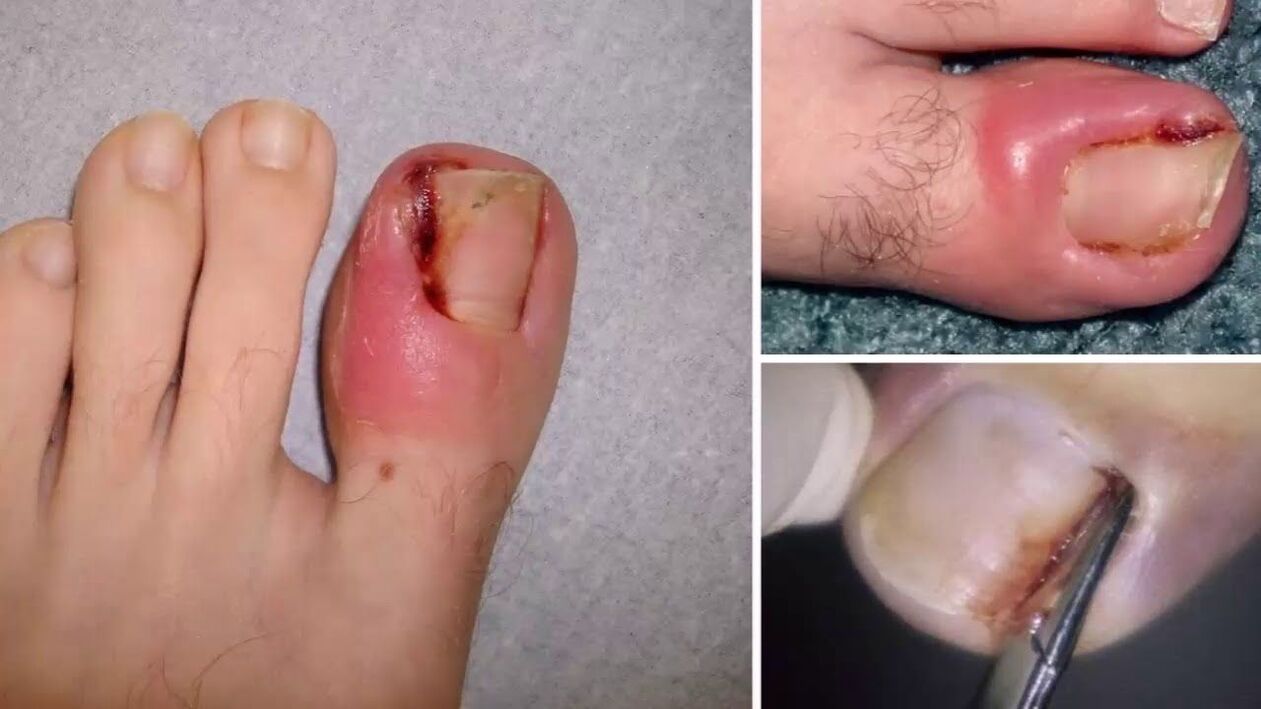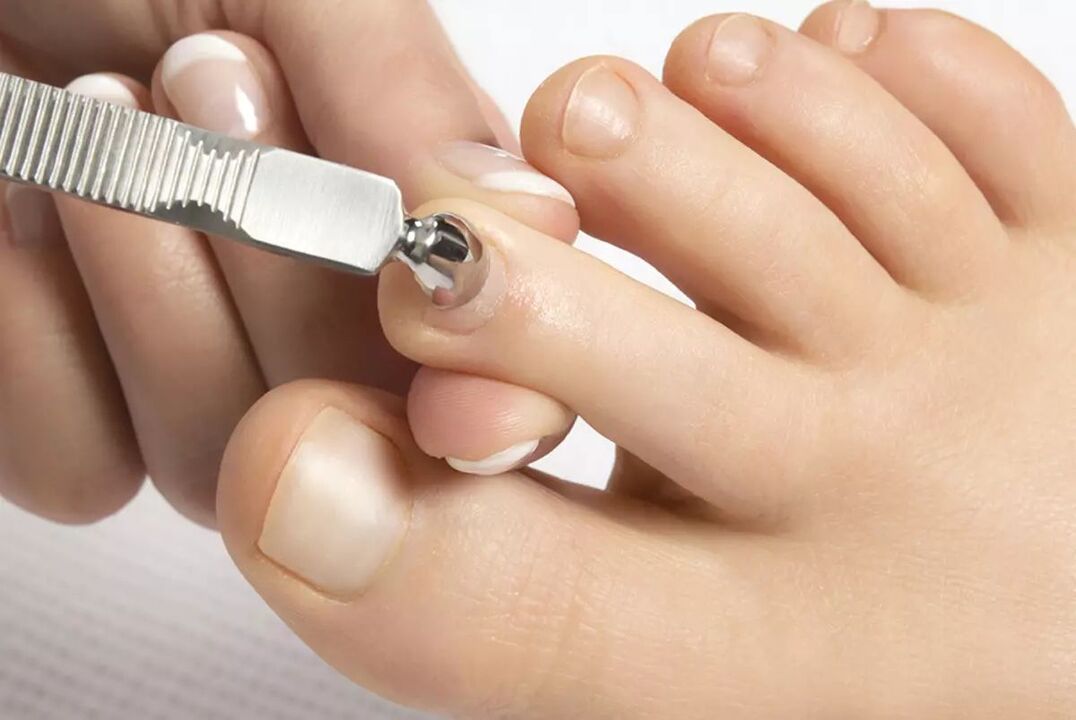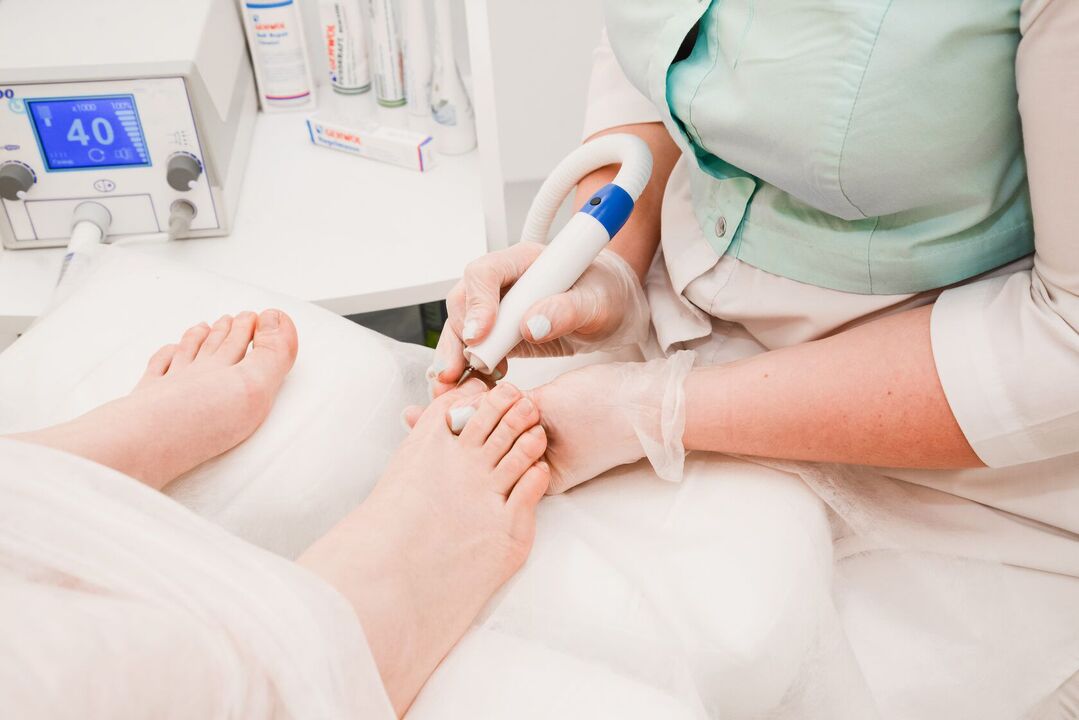Varnishes against nail fungus are an effective form of topical preparation that allows you to quickly cope with mycosis, returning your nails to their natural appearance. Efficiency is associated with the ability of the active substance to penetrate deep into the nail, affecting all layers of the plate. As a result, the fungal spores die without the possibility of relapse.
Advantages and disadvantages
The first advantage of the product is its high efficiency. Due to its liquid structure, the product penetrates deeply. It completely stops fungal spores. This eliminates the possibility of recurrence of the disease.
Other advantages of this form of release:
- Completeness of protection. After the solution dries, a film forms. It does not allow air or moisture to pass through. The film blocks oxygen access to the infected microflora. As a result, the vital activity of microorganisms is suppressed.
- Safety. Fungicidal varnishes are characterized by a minimum of adverse reactions.
- Long lasting. The drugs are applied several times during the week. If you skip the procedure, its effectiveness will not be greatly affected.
- Versatility. They are effective in the treatment and prevention of onychomycosis. Dermatologists can prescribe remedies for those who are at risk. These are increased sweating, foot pathologies, specific work.
The disadvantages of varnishes for toenail fungus include high cost. Among the components of some varieties there are toxic compounds. Therefore, they may be undesirable for children. Another limitation may be pregnancy.

General rules of application
Before applying anti-fungal nail polish, you need to thoroughly rinse the problem area. For processing, use laundry soap or an antibacterial agent.
Important!
The surface of the nail plate must be degreased. To do this, use the product in combination with anti-fungal nail polish.
It is acceptable to use diluted alcohol or iodine.
The following is recommended:
- Dry your feet thoroughly and wipe your nail plates. Then they are sanded with a nail file. It is important that the nail does not end up being long. It needs to be trimmed as carefully as possible;
- Apply the product in a thin layer. The required frequency of application is indicated in the instructions for use;
- Wait for the composition to dry;
- Disinfect all pedicure accessories. This applies to nail files and scissors. In this case, it will be possible to avoid relapse of the disease and secondary infection with the fungus.
There are no colored anti-fungal nail polishes. Can be applied under cosmetic varnish. To do this, the plate must be solid, and the stage of the fungus must be initial or medium.
Contraindications
Not recommended for use during pregnancy. The same applies to the period of breastfeeding. Another limitation is children under four years of age.
It is undesirable to use if you have an individual intolerance to the components. In such cases, you need to consult with a cosmetologist or dermatologist in advance.
For cuts, burns, scratches or other damage to the skin around the nail, do not use varnish.

Contraindications for using anti-fungal varnish
List of the most effective drugs
Among the most effective medications are Exoderil, Onihelp and others. They cost from 700-800 rubles. for 2. 5 ml.
Varnish with the active ingredient amorolfine hydrochloride (5%)
The main component is amorolfine hydrochloride (5%). Excipients: ethanol, triacetin, ethyl acetate. Effective against dermatophytes, yeast and mold fungi. Helps even with insensitive species, for example Micorales. Suitable for use in initial and later stages.
In terms of release form, it is a transparent solution. The application should be as follows:
- The varnish is applied once or twice a week to the affected plates;
- First remove and file the nail to its minimum length. You also need to degrease the plate in advance;
- The varnish is applied with gentle movements. The skin is not touched. After treating the affected plates, the product should dry. This will take three to five minutes;
- Treatment should be carried out until the nail is completely healed.

The use of varnish is unacceptable if you are allergic to the main and additional components. Another restriction is age under 18 years. Adverse reactions are rare. Redness or mild itching ends on its own, after a maximum of 24 hours.
Varnish with the active ingredient amorolfine (5%)
The main component is amorolfine (5%). Excipients: triacetin, ethyl acetate, anhydrous ethanol. In terms of release form, it is a colorless varnish.
Characterized by a wide spectrum of action. Effective against yeast and mold fungi. It is used for demorphic microorganisms, dermatophytes. Treatment is acceptable in the initial and later stages.
Use medicinal nail polish against fungus to apply to the affected plates:
After processing it should dry. Then you can put on socks and shoes. Be sure to disinfect the applicator, file and scissors that were used during the treatment process.
Therapy is carried out for three or more weeks.
Note!
An absolute contraindication is an allergy to the components of the product. A relative limitation is pregnancy and breastfeeding.
Adverse reactions develop extremely rarely and go away on their own.
This varnish is not used for prophylactic purposes. It is designed to treat problematic nail plates.
Varnish with active ingredient terbinafine (1%)
Available in the form of solution, cream, spray and tablets. The active ingredient for each release form is terbinafine (1%). The component makes it impossible for the fungus to multiply and destroys the infectious lesion. Additional components in the composition: benzyl alcohol, sodium hydroxide, purified water, other types of alcohol.
The most effective varnish against toenail fungus is at the initial stage. Used for dermatomycosis and candidiasis. The list of actions is as follows:
- Feet are pre-steamed and cleaned;
- The varnish is applied in a thin layer, leveled - it should completely cover the affected area;
- Treated areas should not be washed for 24 hours.
If more than 50% of the nail is affected, there is no point in using the medicine. Contraindications are alcohol dependence, acute vascular disorders, renal and liver failure. Adverse reactions may develop. Itching, redness, and burning go away on their own. If hives appear, consult a dermatologist.
Varnish and cream with the active ingredient amorolfine (5%)
Available in the form of cream and varnish. The main component in both cases is Amorolfine (5%). Additional components: triacetin, butyl acetate, absolute ethanol. Thanks to the formula, the process of fungal reproduction is completely disrupted.
The varnish is used to treat nail fungus due to dermatophytes, mold and yeast infections. Preferably at the initial stage of mycosis. However, if more than 66% of the area is affected, the product will not be effective.
Use the fungicidal agent as follows:
- The surface of the plate is cleaned and degreased. Use a swab moistened with alcohol;
- Before each use of the medicine, problem nails are treated. Use a nail file and remove the remaining layer of varnish with a swab;
- The applicator is lowered into a bottle of varnish. Next, carefully pull it out. The excess does not rub off on the neck of the bottle;
- Apply the varnish in an even layer using the applicator. Affect the entire surface of the affected plate. Each nail is treated this way. The varnish dries within three minutes.
Contraindicated in case of sensitivity to the components of the product. Adverse reactions develop very rarely. They pass on their own. Loceryl is recommended for therapeutic and prophylactic purposes.

Varnish with active ingredient naftifine (1%)
This is a nail polish against fungus, the active ingredient of which is naftifine (1%). In addition to the varnish, there is a cream with a similar composition. Excipients: ethanol and purified water.
Effective in the treatment of dermatophytes and mold. The application is as follows:
- Feet are washed and dried;
- Trim the nails as much as possible, loosen their structure a little with a nail file;
- The varnish is applied in an even layer - it is permissible to touch adjacent areas of the skin.
Treatment for allergy sufferers is unacceptable. Use is undesirable in case of plate injuries, purulent or infected areas. Adverse reactions are reversible. Most often this is redness, itching, peeling. They go away on their own within 12-24 hours.
Varnish with the active ingredient amorolfine hydrochloride (5%)
Another nail polish against fungus. Available in the form of cream and spray. The main component is amorolfine hydrochloride (5%). Additional substances: triacetin, absolute ethanol, ethyl acetate.
On a note!
Most effective in treating yeast fungi and dermatophytes.
Used for dimorphic microorganisms. The usage should be as follows:
- The varnish is carefully applied to the previously cleaned plate;
- First make sure there are no damages or cracks;
- You can use two layers of the product - the first is applied after the second has dried.
Treatment in children with allergies to components is unacceptable. Adverse reactions are rare. Hyperemia or burning goes away on its own.

Inexpensive but effective antifungal varnishes
The fungus can also be combated using more accessible means. Among them there are no less effective drugs.
Varnish with active ingredient cycloperox (8%)
Perhaps the best and most inexpensive varnish for toenail fungus. Available in the form of varnish and cream. Active ingredient: cycloperox (8%). Auxiliary components isopropanol and ethyl acetate. The drug is effective against dermatophytes, candidiasis and mold fungi.
Used externally:
- The varnish is applied in a thin layer to the problematic nail. Do this once every other day for the first month;
- During the second month - twice a week, during the third - once every seven days;
- During the week, say on Saturday, the varnish is removed. A special solvent is used for this;
- Therapy continues until complete recovery.
Contraindications: allergies to components, childhood, pregnancy and lactation. Adverse reactions are possible. Hyperemia, itching and burning go away on their own.
Varnish with active ingredient formic aldehyde 5%
Available in the form of varnish. The main component is paraform (formaldehyde 5%). Additional components: polyvinyl acetate emulsion, a mixture of proteins and enzymes.
Apply varnish every day for a month. Fights mold and yeast fungi, candidiasis. Application:
- The nail is processed, the plate is cut as short as possible;
- The top layer is removed using a nail file;
- Dry the nails, apply a thin layer of varnish evenly;
- The composition must dry.
The varnish takes effect immediately after application. Can be used for prevention. Contraindications: pregnancy, breastfeeding, hypersensitivity. Side effects: itching and redness of the epidermis.
Oil based varnish
Available in the form of varnish and oil. It only fights dermatophytes. Not used for the treatment of medium and advanced stages. Prevents the spread of infection to large areas of the nail.
The composition contains oils (almond, lavender, jojoba). There are also oil solutions of vitamins.
Contains keratin, silicon and coral extract.
The varnish is used in this way:
- The plates, cuticle and phalanges are treated with Chlorhexidine. If it is not available, other antiseptics are used;
- The varnish is applied in two layers;
- It is allowed to partially touch the area with the cuticle.
Contraindications – allergies to components. Should be used with caution during pregnancy and breastfeeding. Possible side effects are redness of the skin around the nail, itching.

Varnish with active ingredients clotrimazole (1%) and ciclopirox (8%)
Available in gel and varnish form. The main components are clotrimazole (1%) and ciclopirox (8%). Helps cope with onychomycosis, which arose against the background of candidiasis, as well as dermatophytes at the initial stage.
Treatment is carried out according to a specific algorithm:
- The first month is used every day. Apply the product carefully without damaging the skin;
- Once a week, the hardened varnish is removed with a special liquid;
- Second month of treatment. The product is used twice a week. Once every seven days, the coating is completely removed. The nail is filed and trimmed;
- Third month of therapy. Application once a week is sufficient.
Local adverse reactions are possible. The itching or burning goes away on its own. Use is unacceptable for children under 12 years of age and pregnant women. If you are breastfeeding and are allergic to the components, you should also refrain from therapy.
Opinions on nail polishes
On the Internet there are mostly positive reviews about nail polishes for fungus. They note high efficiency and ease of use. Among the disadvantages: high cost, presence of contraindications. Sometimes adverse reactions occur.
Nail fungus varnish helps to quickly cope with an unpleasant problem. This form of release is most convenient for use. The varnish forms a dense protective layer that destroys fungus. First study the instructions, contraindications, and other nuances.
























